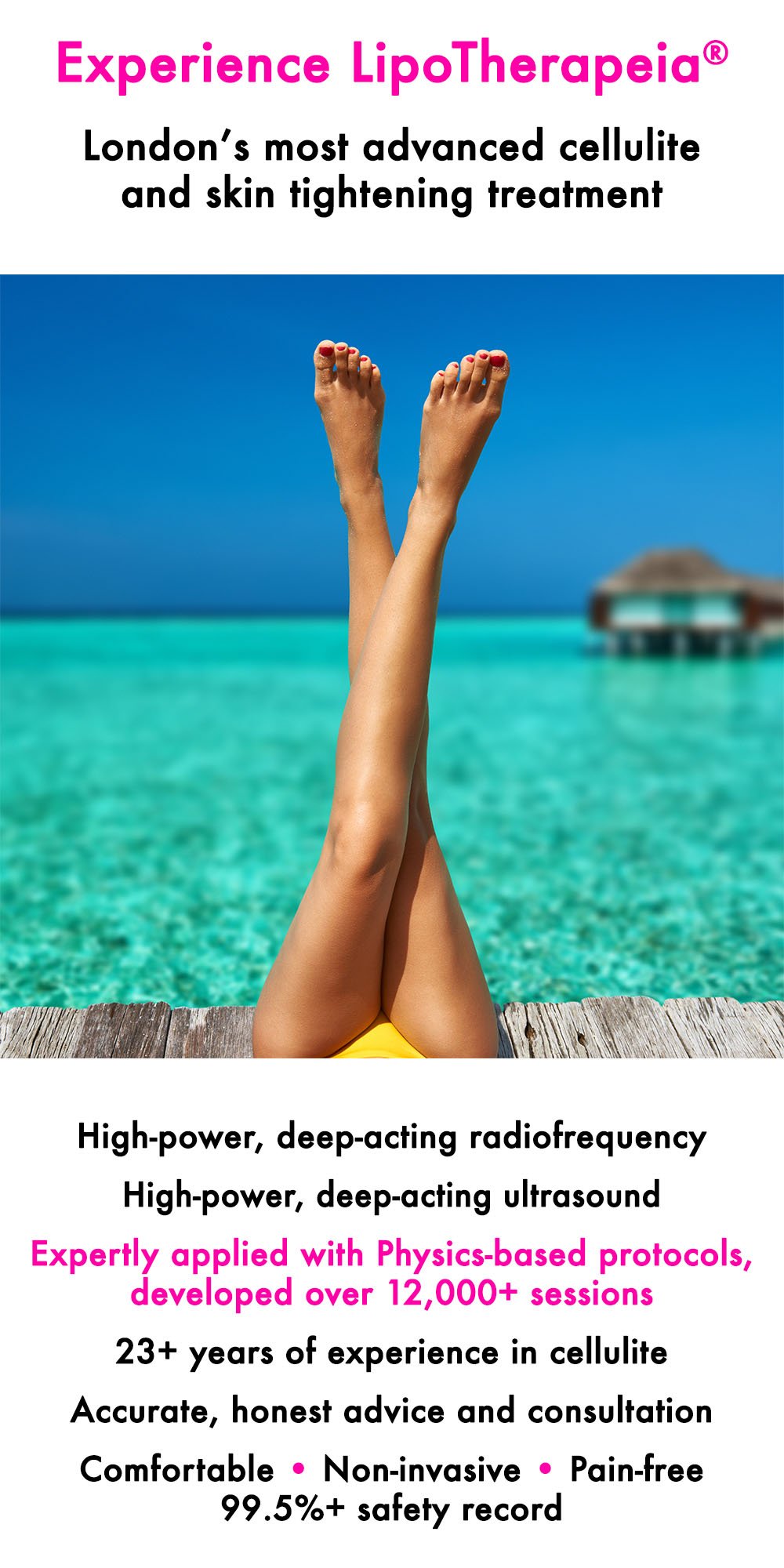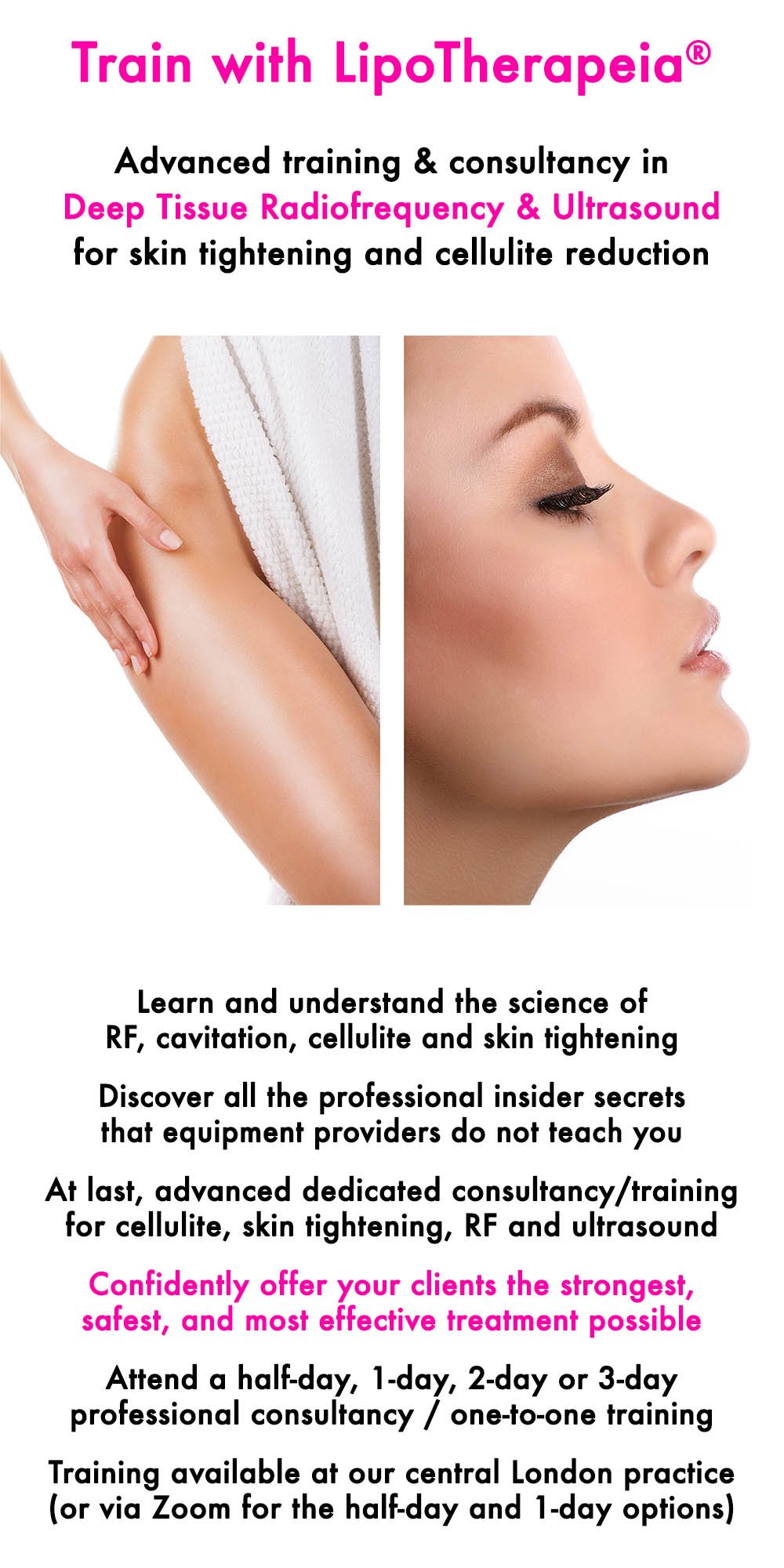Do high glycaemic index foods cause skin ageing and cellulite?
We are pleased to share our experience and knowledge in cellulite and skin tightening, from our clinic in London with everyone in the world. Check all our articles here. And if you do live in London, feel free to book an assessment, consultation or treatment with us here.
Sugar, the number one cause of cellulite today
How high GI foods cause cellulite
High and low GI foods and how to reduce a food’s glycaemic index
Fructose, glycemic index, glycation and cellulite
What about fruits?
Glycaemic load (GL) and cellulite
How can I minimise the effect of glycemic index on cellulite?
Check our professional consultancy in radiofrequency, ultrasound cavitation, cellulite and skin tightening
Sugars, the number one cause of cellulite today
Sugar consumption, in all its forms (sucrose, fructose, high fructose corn syrup, glucose/dextrose, honey, agave syrup, malple syrup etc), is the number one cause of cellulite today.
Sugars affect cellulite in multiple ways:
Provide calories for hypodermal fat accumulation
Lead to the secretion of insulin, which in turn stimulates hypodermal fat accumulation
Lead to collagen glycation (an important cause of cellulite and skin aging)
Lead to low grade, chronic inflammation (an important cause of cellulite)
How high glucose / high glycemic index foods cause cellulite and skin ageing
Glycemic index (GI) refers to the speed with which a certain food raises blood glucose levels. The glycaemic index is a scale from 0-100, with pure glucose set to be 100.
A food is considered to have a low GI if it is 55 or less; high GI if 70 or more; and mid-range GI if it is 56 to 69.
Some foods and drinks actually have a GI much higher than glucose. For example the GI of beer is up to 119 and that of corn flakes is up to 132. Pretty evil, right?
(GI values vary depending on the type of food and how it is processed/cooked, hence the “up to” designation in the examples above.)
Foods with high GI raise blood glucose levels fast. This in turn leads to a high insulin secretion, in order to remove the excess glucose from the bloodstream.
After eating a glucose-rich food, unless we are physically active or we have just exercised, the excess glucose will end up in the liver and adipose tissue (including the hypodermal adipose tissue, i.e. cellulite).
So consuming a high GI food while inactive will quickly deliver some glucose in that food into the hypodermis (“cellulite layer”), where it will be converted into fat and contribute to the cellulite appearance
Furthermore, excess glucose that is converted into fat by the liver will also ultimately end up in adipose tissues around the body, including the hypodermis (cellulite layer)
The higher a food’s GI, the higher the glucose spike > insulin response > consequent cellulite fat accumulation. It’s that simple.
All in all, high GI foods deliver both:
Calories in the form of glucose
Plus stimulation for the absorption of said calories by fat tissue, including cellulite fat tissue, via the pronounced insulin response the trigger.
Due to these two reasons, high GI foods are a major cause of cellulite.
High and low GI foods and how to reduce a food’s glycaemic index
You can check the glycemic index of various foods in this authoritative database from the University of Sydney. Generally speaking:
Most sweet/sugary foods and all refined starches (white bread, white rice, peeled potatoes and thinks like corn flakes) will have a high glycaemic index
The more the starchy food is cooked (boiled, toasted, dried etc) the higher its GI index would be. For example, boiled corn on the cob has a GI of 48, while corn flakes have a GI of up to 132.
Foods that contain almost no carbs (e.g. most vegetables) or few carbs (e.g. some nuts and pulses etc) will have a very low GI, while foods that contain no carbs (meat, fish, most cheeses etc) have a GI of 0
Mixes of high GI with low GI foods result in a mixed GI. For example a typical chicken biryani dish contains:
a lot of basmati rice with a GI of up to 67 (depending on how it is cooked)
with some chicken, oil and veg in it, all of them with a GI of 0
So chicken biryani’s final GI of 52 reflects the reduction of GI that the chicken, oil and veg cause to the GI 67 of pure rice. Depending on how the dish is cooked and the amount of veg, chicken and oil vs rice, the GI of the final dish could be higher or lower.
So in order to reduce the GI of a starchy food we can mix it with:
vegetables (ideally)
protein (great)
fat (not that smart, as this means increased calorie intake)
or a mix of the above (nice compromise)
Fructose, glycemic index, glycation and cellulite
Fructose only has a GI of 20, so one would think that fructose-rich foods like agave syrup and honey (or even pure fructose in our coffee, shakes etc) would be fine.
However, that could not be further away from the truth, as fructose causes more insulin resistance and much more glycation than glucose (glycation refers to the sugars-induced damage of proteins in our skin, blood vessels and elsewhere in the body).
Insulin resistance itself leads to even more glycation damage (more cellulite and skin ageing), chronic low-grade inflammation (more cellulite and skin ageing) and all sorts of other health issues, including diabetes and overall body ageing.
So consuming fructose is actually worse than consuming glucose.
Furthermore, fructose contains the exact same calories as glucose of sugar (sucrose).
In addition, after fructose is ingested it is converted straight into fat (triglycerides) in the liver - it never reaches the blood circulation.
Due to these reasons (calories, glycation, inflammation, insulin resistance) fructose consumption, is a major cause of cellulite, despite fructose’s low GI. Plus, due to the effect of inflammation and glycation, high GI foods are a major cause of skin ageing too.
What about fruits?
Fruits contain a mix of glucose and fructose - plus fibre, water, vitamins, polyphenols and minerals. Most fruits have a low to medium GI.
As fruits contain a lot of fibre, it is very difficult to over-consume them, so with the exception of grapes, bananas or other very sweet fruits, fruits would not be a cause of cellulite or insulin resistance, obesity etc.
Home-made smoothies from whole fruits do contain the same amount of nutrients as whole fruits. However, as they do not involve chewing, it is easy to over-consume them, because they are not as filling as whole fruits.
Shop-bought smoothies quite often contain juices and are not nearly as good as home-made smoothies .
Finally, juices do not contain any fibre so they have a higher GI - plus they are not filling at all. So consider juices as mere fizzy drinks with vitamins.
Glycaemic load (GL) and cellulite
The glycaemic load refers to the total amount of glucose derived from a certain food after digestion, as depends on the food itself and the quantity of that food consumed.
The higher the GL the more the fat accumulation and glycation in the body and consequently the more cellulite accumulation - and skin ageing - in the long run.
To reduce the glycemic load of your diet simply eat less carbs (starches, sugary foods and sweet fruits / juices) and more vegetables, protein and healthy fats/oils.
How can I minimise the effect of glycemic index on cellulite?
It’s quite simple:
Do not over-consume starches and when you do eat starches have them together with lots of vegetables, quite a lot of protein and some healthy oil (e.g. extra virgin olive oil)
Eliminate anything sugary and sweet in your diet, from honey to cakes to fizzy drinks to croissants
That’s the best thing you can do for cellulite prevention and reduction, and whole body health.
Check our professional consultancy in radiofrequency, ultrasound cavitation, cellulite and skin tightening
Do you want to deeply understand radiofrequency, ultrasound cavitation, cellulite and skin tightening? Attend a half-day, 1-day or 2-day or 3-day professional consultancy / one-to-one masterclass and confidently offer your clients the safest, strongest and most effective treatment possible. Service available via Zoom or at our central London practice.



